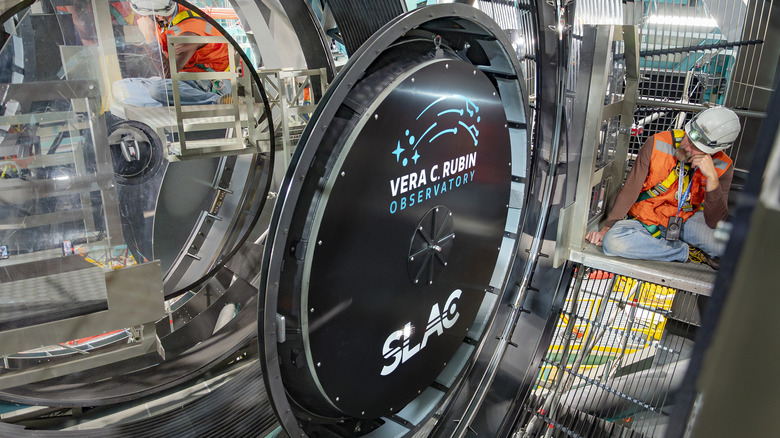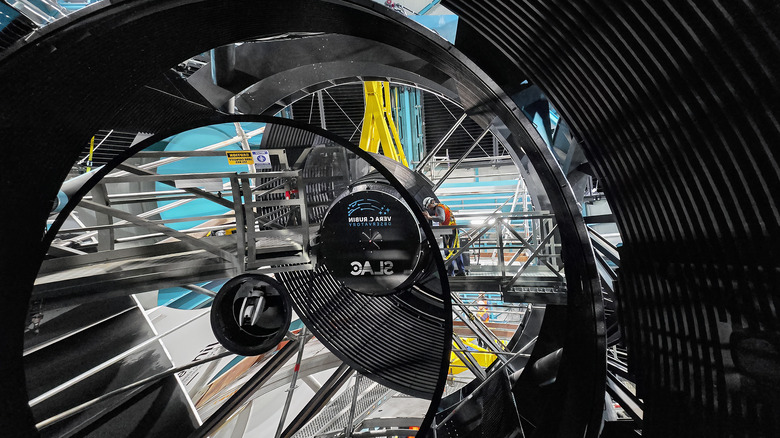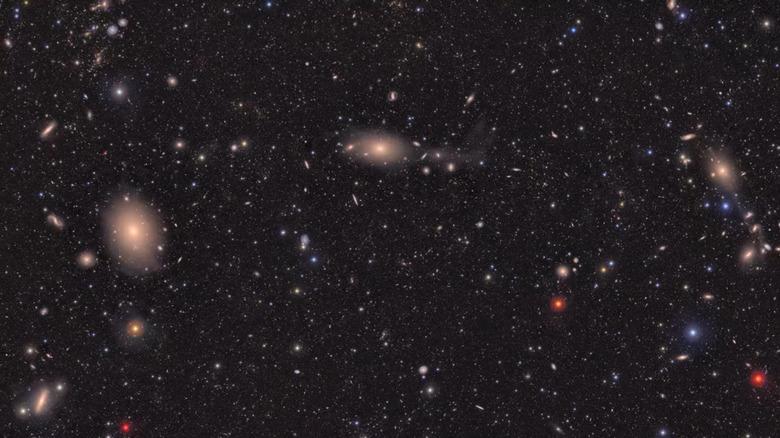The Largest Telescope In The World: How Many Megapixels Does Its Camera Have?
If you've ever tried to take a photo of the moon and stars, you know that astrophotography is incredibly challenging. Although there are tips and tricks for taking astrophotos on your cell phone, to capture the cosmos accurately for research purposes, you're going to need specialized instruments. Meet the Legacy Survey of Space and Time (LSST) Camera, the largest digital camera in the world, which has found its home in the Andes Mountains.
Chile's Vera C. Rubin Astronomical Observatory, named for the astronomer whose research helped to substantiate dark matter, sits on top of El Peñon summit. The area is home to several remarkable observatories due to its high altitude and clear skies, including the Southern Astrophysical Research Telescope and the Gemini South Observatory. The Rubin Observatory is the first of its kind, though, thanks to its combined primary/tertiary mirror, speed, computing infrastructure, and remarkable camera.
The Rubin Observatory's LSST Camera (also known as the LSSTCam) is the largest digital camera ever constructed, with a whopping 3,200 megapixels, or 3.1 gigapixels. With one million regular pixels to every megapixel, that's around 3,200,000,000 pixels of space in each shot. For comparison's sake, a 4K-enabled camera has just over 8 megapixels, and it would take hundreds of HD screens just to display one image captured by the LSSTCam. This means that when it records images of our night sky via the 8.4-meter Simonyi Survey Telescope, it'll do so at an unprecedentedly high definition, giving us new insights into the galaxy.
Inside the LSST Camera
The LSST Camera is the only instrument used to support the Legacy Survey of Space and Time, from which it takes its name. It's approximately three meters long and 1.65 meters across, but it's packed with all kinds of components that make it immensely heavy. It weighs roughly 3000 kilograms (6000 pounds) and offers around a 9.6 square degree field of view.
The camera's focal plane, which is the part of the sensor that receives light on the surface, is what allows the camera to capture images at such a high definition. This is achieved through the use of more than 200 charge-coupled devices (CCDs), each equipped with 16 amplifiers that all read one megapixel. Courtesy of these devices, the entire 3,200 megapixels can be read in just two seconds.
Another feature offered by the camera is six differently colored optical filters. Optical filters are glass discs that can be placed in front of a lens. These filters each allow a clearly defined light range to pass through so they can be captured in images, varying from ultraviolet light all the way up to infrared. Using different optical filters, alongside setting them up in alternate formations, allows researchers to understand a great deal more about space due to the different types of wavelengths emitted by various astronomical objects under different space weather conditions. Because of the huge size of the camera, the filters are also large, sitting at 75 centimeters (or 30 inches) – so much so that they need their own machine to swap them in or out.
What is the LSST Camera used for?
The giant telescope camera's purpose is to record a time-lapse of the universe to support our understanding of dark matter, how the Solar System was formed, and how the Milky Way is structured. To do this successfully, it needed to be built in a way that could capture a massive volume of ultra-wide images each night in the highest definition possible. This data will be processed and made available for research.
Per the BBC, the United States National Science Foundation and Department of Energy, who jointly funded the observatory, stated that the LSSTCam's technical specifications make it possible to capture rare and previously undetected astronomical events. The aim is to use these images to record 20 billion galaxies over the next decade, capturing about 1,000 images daily – or, roughly 10,000 images across ten years.
The camera has been built expressly with the aim of recording faint or variable space objects as well as possible. Its wide range enables it to capture a vast area when scanning the sky, while the telescope's mirrors are designed to catch large volumes of light at once. Similarly, the mirrors themselves were engineered to help ensure that the telescope could move around quickly while producing as few vibrations as possible. In turn, this makes sure that images captured are sharp and focused, making them more useful for advancing our understanding of the skies.


